John Reich
US Coin Designer and Second Engraver
John Reich (also known as Johann Matthias Reich) was known for being an assistant engraver for the US Mint, which was being run under Robert Scot as its Chief Engraver. Reich was responsible for some major types and designs of early US coinage. He was born in Furth, Bavaria (Germany) in 1768. When he was younger, his father Johann Christian Reich originally taught him how to engrave by making medals. It wouldn't be until 1800 when he would move to the United States after the American Revolutionary War.
Some of his work caught the eye of President Thomas Jefferson. In 1801, just a year after he moved to the US, John Reich was recommended by Jefferson to become an engraver at the US Mint in Philadelphia. Even though he was recommended, Reich did not get the full time position, but instead received another smaller job at the mint.
Later on after almost deciding to return to Europe after being given menial jobs for so long, he received an overdue promotion to become assistant engraver (sometimes known as the title of Second Engraver) in 1807. Chief Engraver Scot was 62 years old at the time and his eyesight was failing, so he was ok with the promotion of Reich. The Director of the mint at that time was Robert M. Patterson, who gave Reich the task of redesigning many of the designs of coins currently in circulation.
During this time period, Robert Scot had designed most of the first US coins, particularly the draped bust of liberty coins of nearly all denominations. So John Reich updated some of Scot's early draped bust coins with a new design called the Capped Bust (also known as the Liberty Cap coins). The first coins he started on were the two most popular commercial denominations and he designed the Capped Bust Silver Half Dollar and the two varieties of $5 Gold Capped Bust Half Eagle coins. His half dollar design was very successful and ran from 1807 until 1836 when Christian Gobrecht would alter his design.
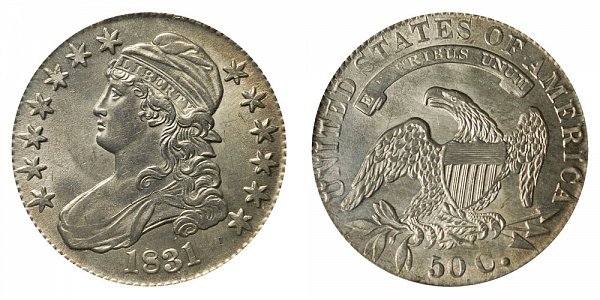
Design of Liberty Cap Silver Half Dollar by John Reich.
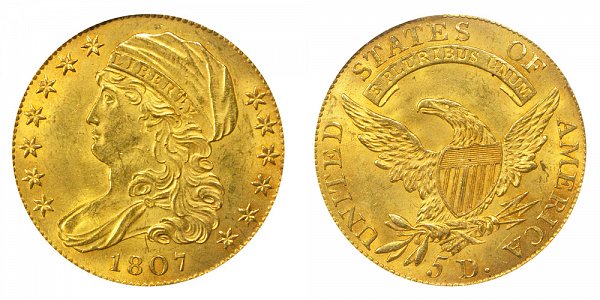
A $5 Gold Capped Bust Half Eagle designed by John Reich (capped and draped bust variety)
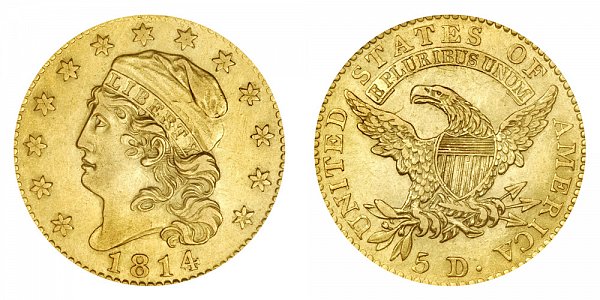
A $5 Gold Capped Bust Half Eagle designed by John Reich (capped head, not draped variety)
The silver half dollar that Reich designed had liberty facing towards the right with 13 stars total on the obverse of the coin. The liberty bust wore a cap on her heard (hence the name capped liberty), which bore an inscription "LIBERTY" on the cap. The reverse or back of the coin had a heraldic eagle with a shield on it, which symbolized the Union of the country. The eagle itself is holding three arrows and an olive branch, which represents strength and peace. Above the eagle shows the inscription "UNITED STATES OF AMERICA" and the bottom has "50 C." representing the 50 cent denomination. The "E PLURIBUS UNUM" motto was displayed on a scroll just above the eagle's head. Many people don't realize it, but this coin also has a lettered edge with the words "FIFTY CENTS OR HALF A DOLLAR" on the edge of the coin all around it. On the outside point of the 13th star, Reich put a notch to represent his signature.
Reich went on to design more coins later on in 1808. One of these is the $2.50 Gold Capped Bust Quarter Eagle. In addition, John Reich also used a modified version of his capped bust design to produce the Classic Large Cent, another early copper cent in 1808. The reverse of this coin featured an adapted wreath design inspired by Robert Scot. Reich continued working and released a new design for the Copper Classic Head Half Cent, which started in 1809 and was very similar to the large cent design from the year before.
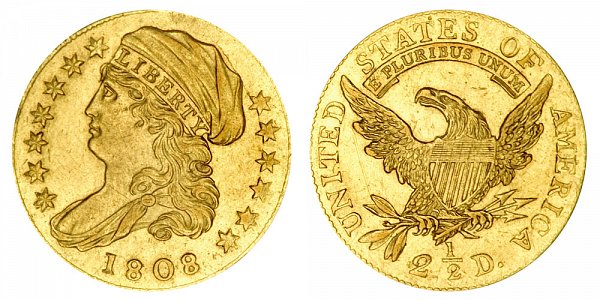
Design of the $2.50 Capped Bust Gold Quarter Eagle coin by John Reich.
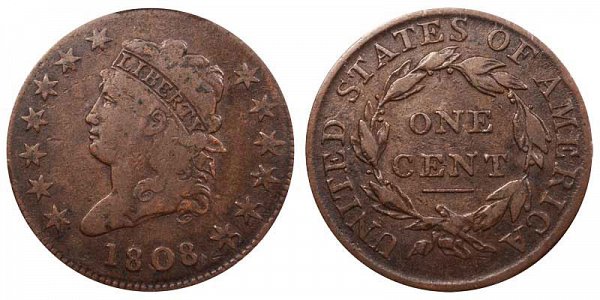
Design of the Classic Head Liberty Large Cent by John Reich.
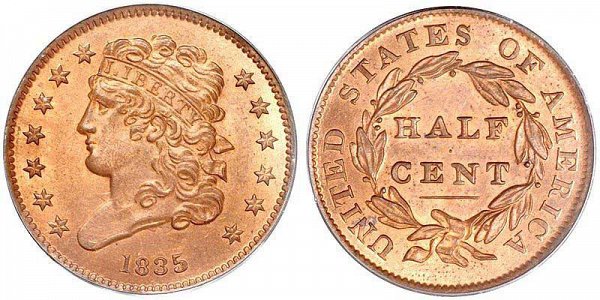
Design of the Classic Head Liberty Half Cent by John Reich.
That wasn't all that Reich would design and engrave. His next creation would be the Silver Capped Bust (Liberty Cap) Dime in 1809, which contained his trademark capped bust design on the front of the coin and a heraldic eagle with shield and "10 C." on the reverse. This design was nearly identical to his half dollar design, except without the lettered edge. He would need to later reduce the size of the 10 cent dime starting in 1828.
His last work would be in 1815 when he would design the Silver Liberty Capped Bust Quarter. Again, the design was the same as his capped liberty dime and half dollar, except for the small words and numbers "25 C." on the back to represent 25 cents, and with the absence of the lettered edge. Later on in 1831, the design would be changed to remove the "E PLURIBUS UNUM" motto on the reverse of the quarter dollar.
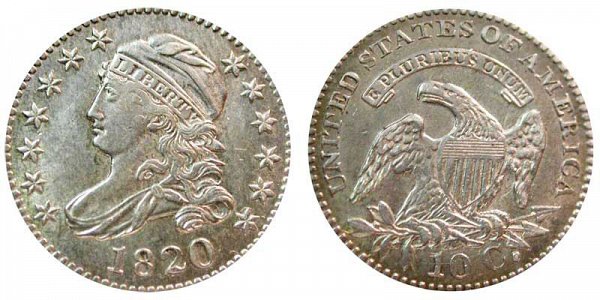
Design of the Capped Liberty Dime by John Reich.
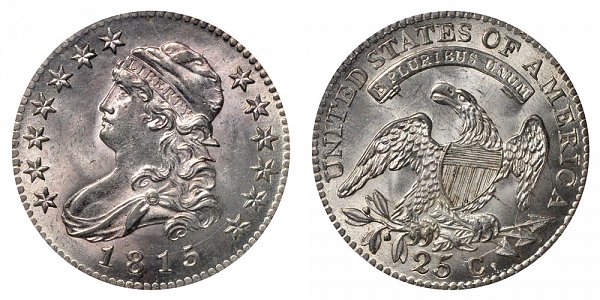
Design of the Capped Liberty Quarter by John Reich.
A new practice took place under Reich that did not happen before at the mint. Gold and Silver coins finally had a denomination printed on them. Also, different types of coins during that time period had the same obverse design of liberty for awhile. The inspiration for the lady liberty on the coin was not exactly known, but one writer claimed it was "Reich's fat German mistress", although this is just speculation.
John Reich resigned from the mint in 1817 after 10 years of work without any promotion or raise in pay. Unfortunately, he did not receive much praise from Robert Scot, who was the Chief Engraver at the time. It's possible that he was bitter or jealous of Reich and his coins, which were slowly replacing those of Scot's. Reich retired and lived in Albany New York until 1833 when he passed away. Although his legacy would continue to live on for a long time and his coin designs would remain very popular among collectors. None of Robert Scot's designs would last as long as the 29-year run of the capped bust half dollar that Reich designed.